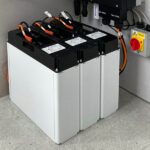In the evolving landscape of Indian financial markets, demat account opening has become an essential tool for investors. A demat account facilitates secure trading by holding shares in an electronic format, eliminating the clutter associated with physical certificates. Opening a demat account is a crucial step for any investor or trader. However, it requires careful consideration of multiple factors that might affect your trading journey. This article outlines some of the primary considerations to keep in mind before proceeding with your demat account opening procedure, incorporating key elements related to trading account opening.
Understanding Demat Account Opening
A demat account is similar to a bank account but holds securities like shares, bonds, government securities, mutual funds, and exchange-traded funds in electronic form. When you purchase shares, they are credited to your demat account; when you sell them, they are debited.
To begin, an investor must approach a Depository Participant (DP)—typically a bank or brokerage firm—to initiate demat account opening. The process includes submitting an application form, providing identification documents, and paying applicable fees.
Key Considerations
1. Selecting the Right Depository Participant
Choosing a reliable DP is crucial. Evaluate the DP based on their reputation, customer service, fee structure, and range of services. Prefer DPs associated with well-known brokerage firms that offer strong digital platforms and investor support.
2. Understanding Brokerage and Maintenance Fees
Transaction and annual maintenance charges vary across DPs. For example:
- If the brokerage is 0.10% per transaction and you buy shares worth ₹50,000:
Brokerage = ₹50,000 × 0.10% = ₹50
Annual maintenance fees typically range between ₹300 to ₹800. These costs impact net returns and should be considered while choosing a DP.
3. Integration with Trading Account
Integrating your demat account with a trading account is essential for smooth transactions. While the demat account stores your securities, the trading account opening process provides access to platforms for buying and selling. Evaluate platforms for features like:
- Real-time market updates
- Technical analysis tools
- Speed of execution
- User-friendly interface
4. Security Features
Ensure your DP has robust security protocols, including:
- Data encryption
- Two-factor authentication
- Transaction alerts via SMS and email
Ask the DP about their safety measures for protecting investor data and assets.
5. Technology and Platform Quality
The quality of your DP’s platform significantly affects your experience. Look for:
- Mobile and desktop compatibility
- Responsive design and easy navigation
- Regular software updates
- Access to advanced analytical tools
A high-quality platform improves trade efficiency and decision-making.
6. Regulatory Compliance
Make sure the DP is registered with SEBI and complies with all regulatory norms. A compliant DP reduces the risk of fraudulent activity and protects investor interests.
7. Availability of Research and Insights
DPs that offer regular research reports, market analysis, and financial insights can be valuable. These resources help investors make informed decisions and understand market trends better.
8. Support Services
Responsive customer support ensures that trading-related issues are resolved quickly. Check if the DP offers:
- Dedicated relationship managers
- Multi-channel support (phone, chat, email)
- Timely response resolution
9. Market Coverage
Choose a DP that offers access to multiple market segments such as equities, mutual funds, commodities, and bonds. A wider coverage enables better portfolio diversification and exposure to various sectors.
Calculating Costs and Returns
Consider the impact of brokerage and maintenance fees on your investment:
Assumption:
- 20 trades per month
- Average trade value = ₹10,000
- Brokerage rate = 0.10%
Monthly transaction value = 20 × ₹10,000 = ₹2,00,000
Monthly brokerage = ₹2,00,000 × 0.10% = ₹200
Annual brokerage = ₹200 × 12 = ₹2,400
Annual maintenance fee (assumed) = ₹500
Total annual cost = ₹2,400 + ₹500 = ₹2,900
Understanding this cost breakdown helps align your trading activity with your long-term financial strategy.
Disclaimer
This article is for informational purposes only and should not be considered financial advice. Investors are advised to thoroughly assess all aspects of demat account opening, including their financial goals, risk tolerance, and regulatory norms. Professional guidance is recommended for customised investment strategies.
Opening a demat account is a foundational step in the stock market. With careful consideration of the points above, investors can set up a secure, cost-efficient, and growth-oriented trading experience. Prudent evaluation of every aspect ensures better control over investments and long-term financial planning.
- Key Considerations Before Proceeding with Your Demat Account Opening Procedure
- This article outlines some of the primary considerations to keep in mind before proceeding with your demat account opening procedure, incorporating key elements related to trading account opening.
- Demat Account, Demat Account Opening, trading account opening
Related posts:
 Discover the Best Fence Installation Services in Omaha with Huskins Services LLC
Discover the Best Fence Installation Services in Omaha with Huskins Services LLC
 Summer Solstice Party Ideas & Activities for a Magical Celebration | BizzCrave
Summer Solstice Party Ideas & Activities for a Magical Celebration | BizzCrave
 Luxury or Budget? Finding the Right Heathrow Transfer for You
Luxury or Budget? Finding the Right Heathrow Transfer for You
 What Is Cold Rolled Stainless Steel Coil and Why Does It Matter?
What Is Cold Rolled Stainless Steel Coil and Why Does It Matter?
 Make Impact with Commercial Signs Raleigh NC: A Strategic Guide to Business Success
Make Impact with Commercial Signs Raleigh NC: A Strategic Guide to Business Success
 PEX vs Copper in New Homes: What’s Right for You? | Creative Repipe
PEX vs Copper in New Homes: What’s Right for You? | Creative Repipe
 Top Benefits of Professional Roller Shutter Repair in London
Top Benefits of Professional Roller Shutter Repair in London
 What to Expect When Buying a Solar Battery Locally – Pricing, Quality, and Local Support Insights
What to Expect When Buying a Solar Battery Locally – Pricing, Quality, and Local Support Insights







